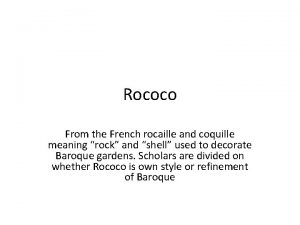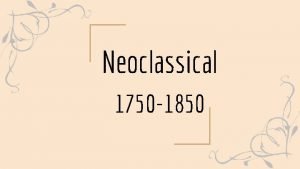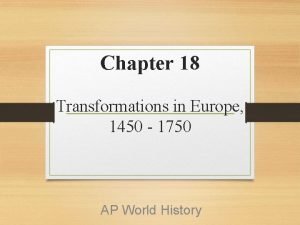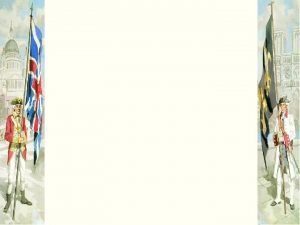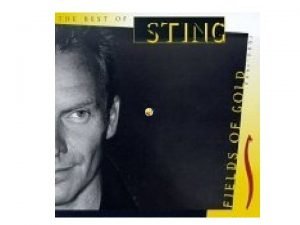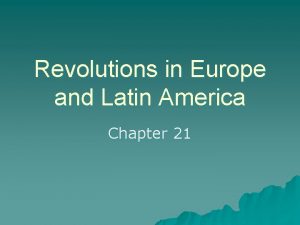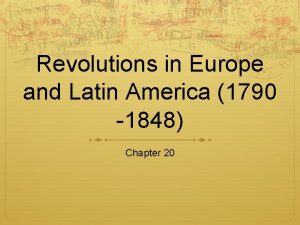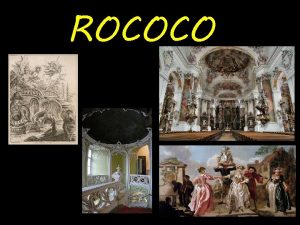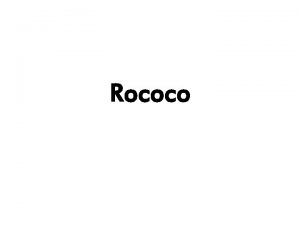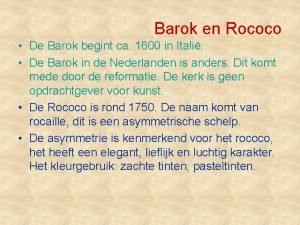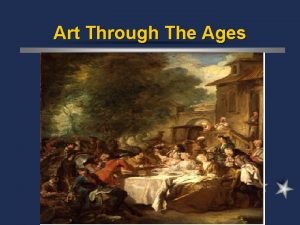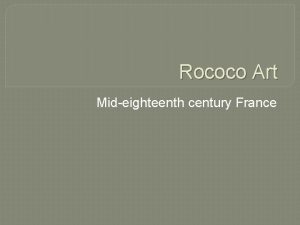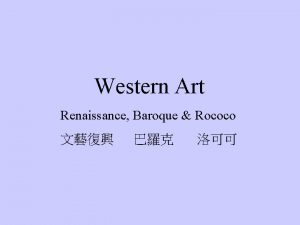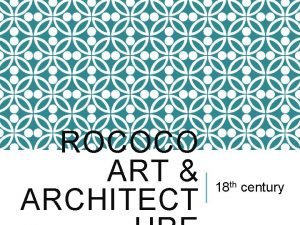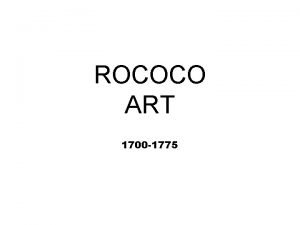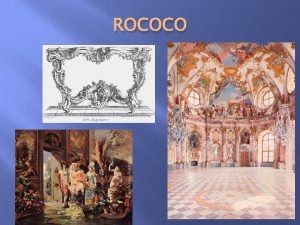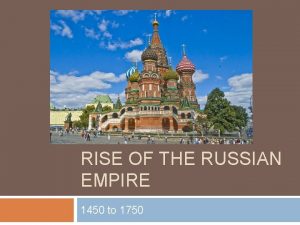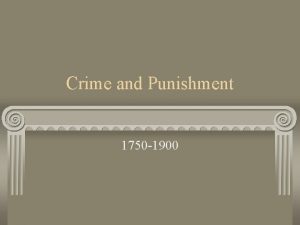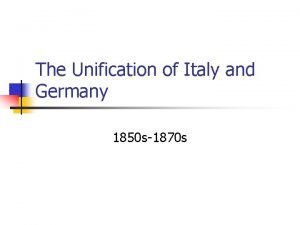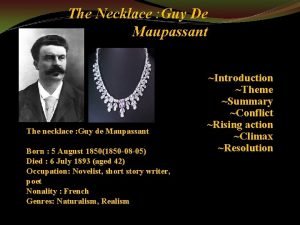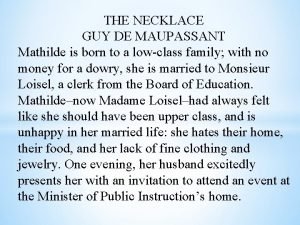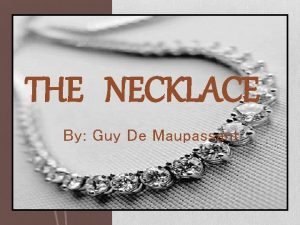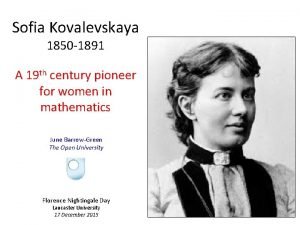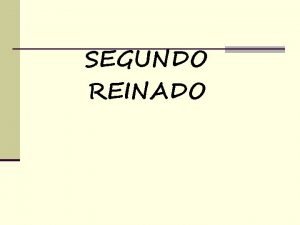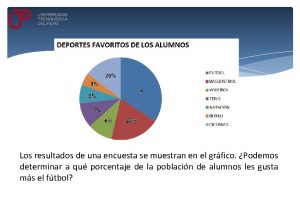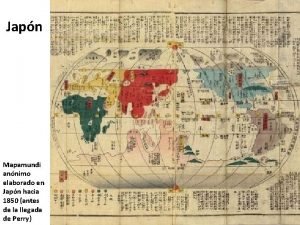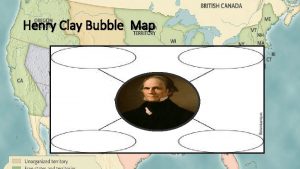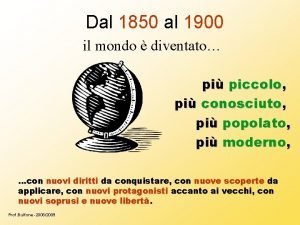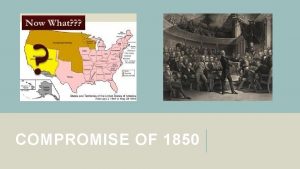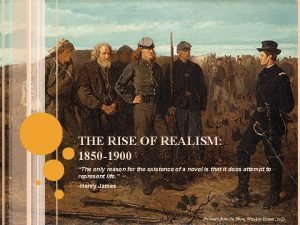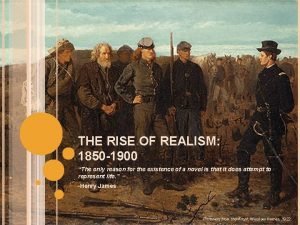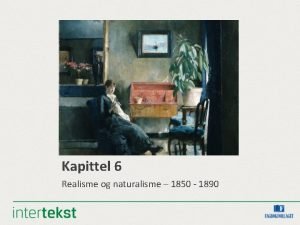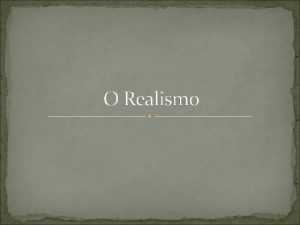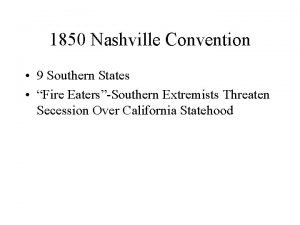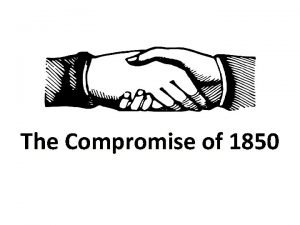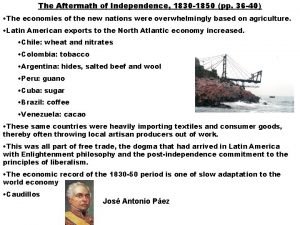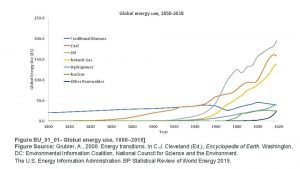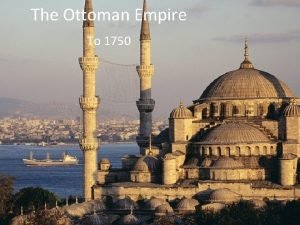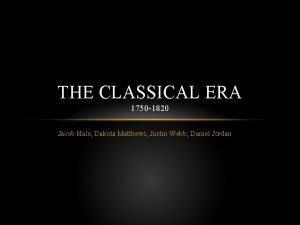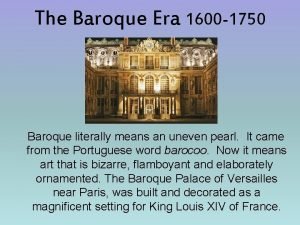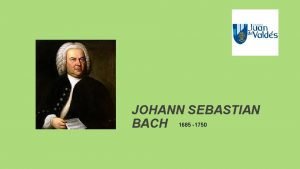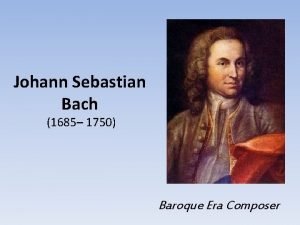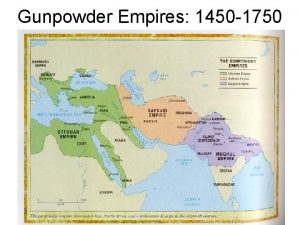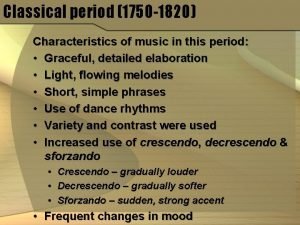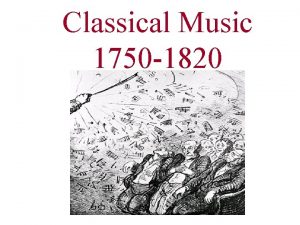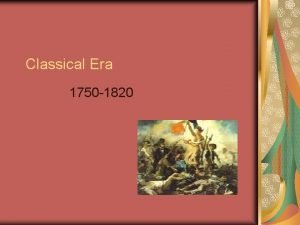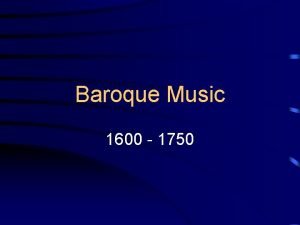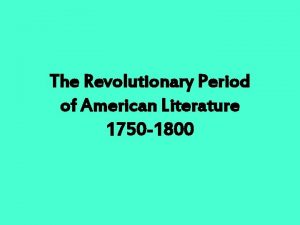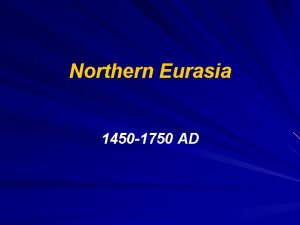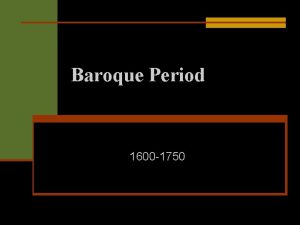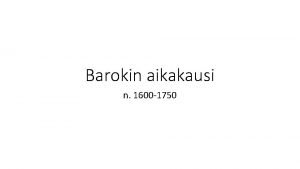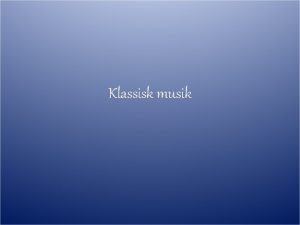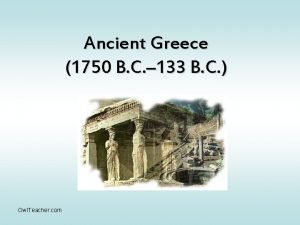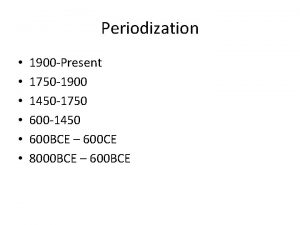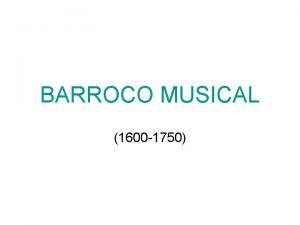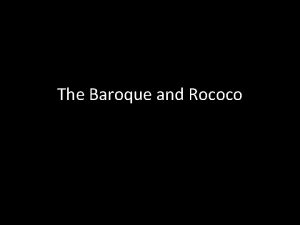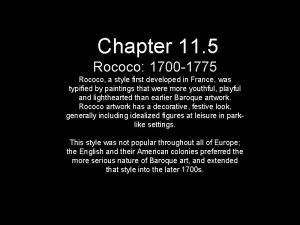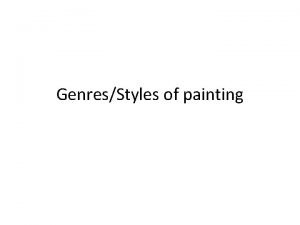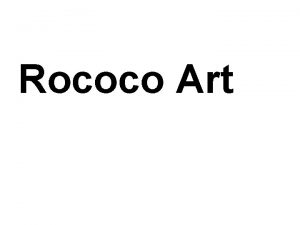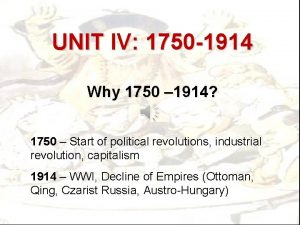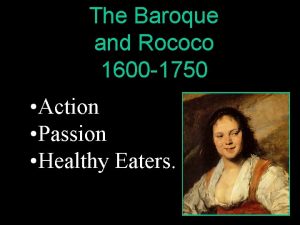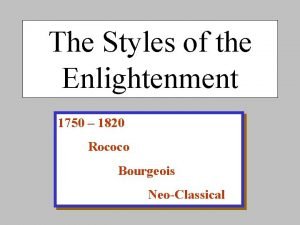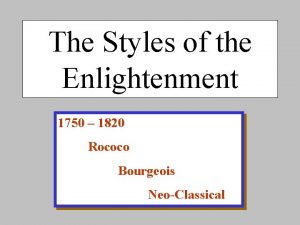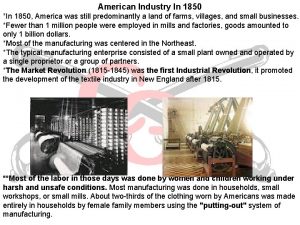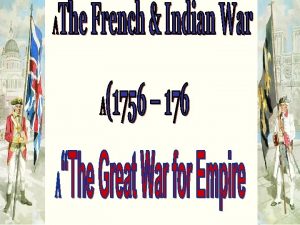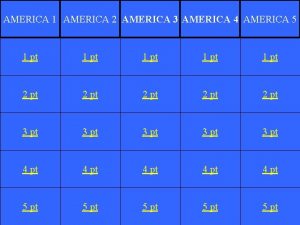Europe and America 1750 1850 Rococo from Rocaille














































































- Slides: 78

Europe and America 1750 - 1850

Rococo (from Rocaille (French) meaning Pebble)

Features of Rococo Art – “The French Taste: ” Some Historians refer to the 18 th century as “the great age of the aristocracy. ” The tastes of aristocratic patrons guided the subject and style of Rococo art. Women who held high cultural positions influenced the taste of this time. Architectural interiors and decorative household objects incorporated sinuous curves. Luxuriant decorative motifs included flowers, foliage, garlands, shells and cupids. Household objects in this style included furniture, ceramics, glassware, tapestries and chandeliers, as well as paintings. Artists to associate with Rococo are: Antione Watteau, François Boucher, and Jean-Honorē Fragonard Themes of love and happiness were often depicted. Artifice was popular and sincerity was thought to be in bad taste. Baroque influences on Rococo design are: the use of crisscrossing diagonals in compositions, curved forms, and slanting recessions. But in Rococo’s hands Baroque drama often dissolved into sensual playfulness.



François de Cuvilliès Hall of Mirrors, the Amalienburg Nymphenburg Palace Park, Munich, Germany early 18 th C.

101. Jean-Honoré Fragonard The Swing 1766 oil on canvas 2 ft. 11 in. x 2 ft. 8 in.

Jean-Honoré Fragonard The Swing • This is a typical “intrigue painting” in Rococo style. • A young gentleman admires his sweetheart as she flirtatiously kicks of her shoes. • A stature of cupid holds a finger to his lips. • The landscape behind her is almost like a scene from an opera. • The scene has a soft light and pastel colors. • Overall, the picture suggests a sensual encounter. *Khan Academy Video


Art of the Enlightenment and Neoclassical Art

The Philosophy of Enlightenment in the 18 th century, The Gathering of Knowledge – The Progress of Society: Rococo’s aristocratic culture was challenged by scientists and commoners in the 18 th century. The feudal systems dissolved in Europe. And, political revolutions erupted in France and America. Enlightenment thinking was based on reason and critical analysis. People began to question unfounded beliefs (such as superstitions, metaphysics, and the supernatural), demanding verifiable evidence for proof. The Enlightenment encouraged the application of the scientific method to learning and thought.

The Philosophy of Enlightenment in the 18 th century, The Gathering of Knowledge – The Progress of Society: The seeds of the Enlightenment philosophy were planted in the 17 th century by mathematicians and scientists in Europe such as Descartes, Pascal, Newton, and Leibnitz. In the Americas, Benjamin Franklin and Thomas Jefferson were educated in this philosophy. The 17 th century theories of John Locke, an English physician and philosopher, influenced 18 th century enlightenment ideas. In his “Doctrine of Empiricism” he professed that our ideas are not God-given, but gained through experience. Locke’s theories elaborated the idea that humans have rights to life, liberty and property. Locke’s philosophy influenced the revolution in America, empowering people to take control of their own destinies. In France, this idea grew: That progress in society can be systematically planned in order to improve it.

Enlightenment in the 18 th century Progress and Knowledge: • The first modern encyclopedia appeared. • Industrial Revolution began in England in the 1740’s • In 1776 iron was first used as a building material on a bridge in England. Knowledge about ancient Rome was important to the cultured elite of the 18 th century – this interest led to Neoclassicism. • It was popular for Europeans and Americans to take the “Grand Tour” of Italy. • The Enlightenment encouraged a taste for naturalism, leading to the popularity of portraits set against landscapes. Good examples are from Thomas Gainsborough, and Benjamin West who presented historical characters in contemporary dress.

Some philosophers and artists rejected the progress of the Enlightenment. Their ideas and work eventually led to Romanticism. Jean-Jacques Rousseau, a leading French philosopher advocated a return to natural values “that exalt the simple honest life of peasants. Rousseau’s views were popular, and brought about a turning away from Rococo’s artificial sensibility. Rousseau’s followers sought to create more “natural” expressions that led to Romanticism and eventually evolved into Social Realism in the 19 th century.

William Hunter Child in Womb from Anatomy of the Human Gravid Uterus 1774

99. Miguel Cabrera. Portrait of Sor Juana Ines de la Cruz. . c. 1750 CE. Oil on Canvas. The portrait is a posthumous of the famed Mexican nun and writer. She was thought to be the earliest feminist of the Americas.

Miguel Cabrera Portrait of Sor Juana Ines de la Cruz • Sor Juana Ines de la Cruz, was born into a Creole family and was considered a child prodigy in terms academics. She became a lady in waiting in the house of the viceroy (the Spanish king of Mexico) and then decided to become a nun rather than marry so she could focus on her studies. • Miguel Cabrera painted the sister in a position at her desk in which male scholars were painted. She wears a escudo de monja (nun’s badge) on her chest. Her badge shows the Annunciation. Her left hand holds a rosary as she looks at the text by St. Jerome (the saint after which her religious order was named). • She is surrounded by books in her library and sits at the desk with a direct gaze.


100. Joseph Wright of Derby, A Philosopher Giving a Lecture at the Orrery ca. 1763 -1765, oil on canvas, 4 ft. 10 in. x 6 ft. 8 in.

Joseph Wright of Derby A Philosopher Giving a Lecture at the Orrery • Joseph’s Wright’s specialty was using dramatic candle and moon light. • The image shows a scholar using an orrery to show the universe at work like clock mechanism. • The lamp illuminates the figures as the children watch in awe. Tiny orbs (planets) move. • The observer takes notes. • The entire image suggests the wonder of scientific knowledge and shows influence of the Enlightenment doctrines.

Joseph Wright of Derby, Experiment on a Bird in the Air Pump 1768, oil on canvas, 6 x 8 ft.


105. Élisabeth Louise Vigée-Lebrun Self-Portrait 1790 oil on canvas 8 ft. 4 in. x 6 ft. 9 in.

Élisabeth Louise Vigée-Lebrun Self-Portrait • Vigée-Lebrun chose a “naturalistic” approach to art, not frivolous. • Her portrait suggests her independent role in society; she was economically independent and worked for the nobility of Europe. She was greatly admired by Marie Antoinette. • She was one of few women admitted to the Royal Academy of Painting and Sculpture. Unfortunately, after the revolution in France, women were not longer permitted to attend.

Neoclassicism is a late 18 th century artistic movement which evolved out of the Enlightenment’s interest in Greece and Rome. (A “grand tour” of Europe was part of the education of the elite and Rome was considered high on the list of pilgrimage sites. ) Neoclassical artists used subjects and styles of ancient art. Important neoclassical artists to note: Jacques-Louis David – whose important works Oath of Horatii and Death of Marat, deal with theme of patriotism and self-sacrifice. In architecture, the Neoclassical style flourished. New buildings were inspired by historic ones from the Renaissance, Greek and Roman periods. A good example is: Jefferson’s Monticello in Virginia (USA). Thomas Jefferson “championed the Neoclassical style as the official architectural style of the new American republic because it represented for him idealism, patriotism and civic virtue. ” – Kleiner

Neoclassicism brought liberty, civic virtue, morality as models during a period of political upheaval.

104. Jean-Antoine Houdon George Washington 1788 -92 marble 6 ft. 2 in. high

Jean-Antoine Houdon, George Washington • At the end of the American Revolutionary war, the Virginian Assembly wanted a George Washington statue for public display. Thomas Jefferson, who was serving as the Minister to France, was selected to find a sculptor. • Jefferson chose Houdon who was a famous neoclassical sculptor. Houdon came to America and took measurements with Benjamin Franklin of George Washington. • Initially, Houdon made an idealized, classical portrait in Greece/Roman style clothes. Washington preferred contemporary clothes. • The final sculpture mimics Polyklietos’ Doryphores. • At the elbow there is a bundle of 13 rods representing strength through unity (E Pluribus Unum or Out of many, one). • Behind him is a plough. Following service, Washington moved to his farm to live a peaceful life.


Jean-Antoine Houdon Voltaire 1778 marble 18 7/8 in. high

103. Jacques-Louis David Oath of the Horatii 1784, oil on canvas, approximately 11 x 14 ft. *Khan Academy Video

Jacques-Louis David Oath of the Horatii • David studied in Rome and was much influenced by the classical masters; he thought classical art was the highest imitation of nature. • He rebelled against Rococo as “artificial” and agreed with themes of the Enlightenment. • David felt artwork should have a subject with moral and civic virtue. • In the Oath of the Horatii, a story from pre-Republican Rome, the conflict between love and patriotism is illustrated. The cities of Rome and Alba resolved their war through a series of encounters by representatives of the Roman family, Horatius, and Alba family, Curatius. One for the Horatius sister, Camilla, was to marry one of the Curatius brothers and the wife of the Horatius was also a born a Curatius.

Jacques-Louis David Oath of the Horatii, Continued • The male figures are rigid, while the females are softened. • The figures show courage, patriotism, and loyalty to a cause. • Neoclassicism became the semiofficial style to represent the revolution and instigated patriotism. • When the revolutionist Robespierre fell, David was jailed from 1794 -95. When Napoleon Bonaparte came into power, he asked David to be the First Painter of the Empire; Neoclassicism appealed to Napoleon.


Jacques-Louis David Death of Socrates 1787, oil on canvas, 51 x 77 1/4 in.

Jacques-Louis David The Death of Marat 1793 oil on canvas approximately 5 ft. 3 in. x 4 ft. 1 in.


Jacques-Germain Soufflot The Panthéon (Sainte-Geneviève) Paris, France 1755 -1792

Pierre Vignon La Madeleine Paris, France 1807 -1842

Pierre Vignon La Madeleine Paris, France 1807 -1842

Antonio Canova Paulene Borghese as Venus 1808 marble life-size

Antonio Canova Paulene Borghese as Venus 1808 marble life-size

Karl Gotthard Langhans Brandenburg Gate Berlin, Germany 1788 -91

Wedgwood and Co. Vase with Bridal Preparation Scene black basalt stoneware 1769 -1775 18 in. high

Robert Adam Etruscan Room Osterley Park House Middlesex, England begun 1761

102. Thomas Jefferson Monticello Charlottesville, Virginia 1770 -1806

Thomas Jefferson Monticello • Thomas Jefferson wanted to adopt Neoclassism as the national architecture. • Jefferson was an amateur architect as well as economist and statesman. He worked on designs Andrea Palladio with modifications by for his own home, Monticello. Vicenzo Scamozzi, Villa Rotonda (formerly • Jefferson was influenced by Villa Capra), near Vicenza, Italy, 15661590 s Palladio’s Four Books on Architecture and used it to help design his home using local wood and brick. The home is thought to be similar to the Villa Rotonda.

Horatio Greenough George Washington 1832 -1841 marble approximately 11 ft. 4 in. high

Benjamin Latrobe Major L’Enfant Capitol Building Plan of Washington, DC 1803 -1807 1791

Benjamin Latrobe Tobacco Capital Washington, DC 1809

Benjamin Latrobe Corncob Capital Washington, DC 1809

Edmonia Lewis Forever Free 1867 marble 3 ft. 5 1/4 in. x 11 in. x 7 in.

Jean-Auguste-Dominique Ingres Apotheosis of Homer 1827, oil on canvas, 12 ft. 8 in. x 16 ft. 10 3/4 in.

107. Jean-Auguste-Dominique Ingres Grande Odalisque 1814 oil on canvas 2 ft. 11 in. x 5 ft. 4 in. *Khan Academy Video

Jean-Auguste-Dominique Ingres Grande Odalisque • Ingres worked with David in his studio, but split with David and thought that he used a more true “Greek” style. • Ingres often placed figures in the foreground. • Odalisque = member of the Turkish harem • Ingres had a taste for the Titian, Venus of Urbino exotic. • Classical form with a romantic theme.

Romanticism

Romanticism A shifting emphasis from reason to feeling. Jean-Jacques Rousseau’s quote “Man is born free, but is everywhere in chains!” expresses the sentiments of Romanticism. For the Romantics, freedom of politics, thought, feeling, action, worship, speech and taste, for all individuals was a right. To Romantics the path to freedom was through imagination rather than through reason. Feelings would set men free, instead of thoughts. Most scholars date the main flourish of Romanticism from 1800 -1840. The period fits between Neoclassicism and Realism (the onset of Modern Art). Objective nature versus Subjective emotion Romanticists were interested in the Medieval period. They had a taste for the sublime and mysterious. Important Romantic artists are: William Blake, Francisco Goya, Theodore Gericault, Eugene Delacroix, and landscapists: JMW Turner, Thomas Cole, and Albert Bierstadt.

The transition from Neoclassicism to Romanticism. Jacques-Louis David Napoleon at St. Bernard’s Pass 1800 oil on canvas 9 ft. 11 1/2 in. x 7 ft. 2 in.

The transition from Neoclassicism to Romanticism. Anne-Louis Trioson The Burial of Atala 1808 oil on canvas 6 ft. 11 in. x 8 ft. 9 in.

106. Francisco de Goya. Y no hai remedio (And There’s Nothing to Be Done, from Los Desastre de la Guerra (The Disasters of War), plate 15, Francisco de Goya. 1810 – 1823 CE. Published 1863. Drypoint etching.

Francisco de Goya. Y no hai remedio (And There’s Nothing to Be Done, from Los Desastre de la Guerra (The Disasters of War), plate 15, Francisco de Goya. • Goya created the aquatint series called The Disasters of War from 1810 – 1820. The 82 images document, and protest, the French occupation of Spain by Napoleon Bonaparte. Napoleon tricked king of Spain, Charles the IV, into allowing troops across border in helps of invading Portugal. Instead, he took Spanish throne and made his brother Joseph the ruler. There was a Spanish uprising and many died. Eventually, the Spanish took control in 1814. • Throughout this period, Goya worked as artist to Joseph Bonaparte. Later, he denied involvement with “intruder king”. • Etching and drypoint were used for the images.

Francisco de Goya. Y no hai remedio (And There’s Nothing to Be Done, from Los Desastre de la Guerra (The Disasters of War), plate 15, Francisco de Goya. A man, blind-folded, head downcast, stands bound to a wooden pole. His white clothes, despite tears and rips, seem to emit light; although the man’s off-kilter posture signifies defeat, he is yet heroic, an Alter Christus—another Christ. On the ground in front of him is a corpse, contorted, the spine twisted, arms and legs sprawled in opposite directions. His grotesque face looks out at us through obscured eyes as blood and brain matter ooze out of his skull and pool around his head. Seconds ago this man was alive. Further off, to our hero’s left, other men, doubledover and on their knees, are similarly secured to wooden stakes. To his right we see the cause of the carnage: a neat line of soldiers aim rifles at the men, the muzzle of their weapons disappearing behind our hero’s hip. But the rest of the gun is not left to our imagination. Suddenly—and in such an obvious position that we wonder how we did not see them before—the barrel of three rifles appear from the right edge of the picture, aimed at our messianic hero. Not only is he about to die, but his executioners are everywhere. As the caption of the picture tells us, “Y no hay remedio” (And there's nothing to be done). From: https: //www. khanacademy. org/humanities/ap-art-history/later-europe-andamericas/enlightenment-revolution/a/goya-disasters-of-war

Francisco Goya The Third of May, 1808 1814, oil on canvas, 8 ft. 8 in. x 11 ft. 3 in.

Francisco Goya Saturn Devouring His Children 1819 -1823 fresco on canvas 4 ft. 9 in. x 2 ft. 8 in.

108. Eugène Delacroix Liberty Leading the People 1830, oil on canvas, 8 ft. 6 in. x 10 ft. 8 in. *Khan Academy Video


Eugène Delacroix Liberty Leading the People • Delacroix was known as a true colorist and painted with an improvisational style. • Liberty Leading the People shows the passion and energy of the Revolution of the 1830 s. The images is based on the Parisian uprising against Charles V. • The painting shows an allegorical personification of Liberty. She holds the tri-color banner of the 4 th republic as well as a Phrygian cap (symbol of a freed slave in antiquity). • There images also shows street boy, intellectual dandy, works all with weapons. • Notre Dame is the background marking place as Paris.

109. Thomas Cole The Oxbow 1836, oil on canvas, 4 ft. 3 1/2 in. x 6 ft. 4 in. *Khan Academy Video

Thomas Cole The Oxbow • Cole was a member of the Hudson River School of artists. • He immigrated to the US from Great Britain in 1818. He is thought to have helped lift landscape painting to the level of historical representative paintings. • The painting shows a bend in the Connecticut river. • The image shows a clear diagonal division with an area that is wild and untouched contrasted with an area that is ordered and productive. The image speaks of westward expansion.

The Industrial Revolution in England • The industrial revolution in England impacted Romantic landscape painting since it changed the look of the landscape. • The cost of agrarian products rose, as compared to factory made products, and many farmers could no longer afford to keep farms.

111. Joseph Mallord William Turner The Slave Ship 1840, oil on canvas, 2 ft. 11 11/16 in. x 4 ft. 5/16 in.

Joseph Mallord William Turner The Slave Ship • Turner’s work is frothy swirls of emotive color and clearly romantic. Turner was though to be a visionary. • The subject of the painting is based on incident in book title, The History of the Slave Trade, by Thomas Clarkson published in 1939. The incident involves a captain who realized he would make more money for slaves lost at sea, rather then those who died en route, so he threw sick slaves overboard. • There are iron shackles around ankles and wrist giving them no chance of survival.

Joseph Mallord William Turner Rain, Steam and Speed 1844, oil on canvas, 3 ft. 11 3/4 in. x 4 ft. *Khan Academy Video

110. Still Life in the Studio. Louis-Jacques-Mandé Deguerre. 1837 CE. Photograph.

Still Life in the Studio Louis-Jacques-Mandé Deguerre • Artists like Vermeer used a camera obscura to help paint details. Then, the camera lucida (lighted room) help to project an image onto a surface. Then, finally, Deguerre invented the Deguerreotype which was called photography from the Greek word photos (light) and graphos (writing). • The Deguerreotype allows an image to be fixed to a photographic plate using light and exposure. • This still life is inspired by Dutch still lives like Vanitas’.

Late 19 th Century Architecture

112. Charles Barry & A. W. N. Pugin Houses of Parliament, Palace of Westminster London, England, designed 1835. *Khan Academy Video

Charles Barry & A. W. N. Pugin Houses of Parliament, Palace of Westminster • The site of the Palace of Westminster has been important Since the 11 th century. • The palace was rebuilt by Barry and Pugin in 1840 in Neo-gothic style and shows a “Gothic Revival”. • The site includes Westminster Abbey which is where monarchs have been crowned, married, and buried since the 11 th century. • It is located on the River Thames in London and symbolizes monarchy, religion, and power. • The palace is also the seat of parliament and represents constitutional monarchy as well as the bicameral parliamentary System. *Khan Academy Video
 Coquille meaning
Coquille meaning Apotheosis of homer artist
Apotheosis of homer artist Marat artist
Marat artist Asia africa song
Asia africa song Europe map 1750
Europe map 1750 North america 1750
North america 1750 Russians lyrics sting
Russians lyrics sting Revolutions in europe and latin america section 2 quiz
Revolutions in europe and latin america section 2 quiz America africa and europe before 1500
America africa and europe before 1500 Revolutions in europe and latin america
Revolutions in europe and latin america Columbia exchange
Columbia exchange Rap of the states
Rap of the states Whats an onomatopeia
Whats an onomatopeia Why is called latin america
Why is called latin america Performance e body art
Performance e body art Rococo definition
Rococo definition Rococo painting characteristics
Rococo painting characteristics Art deco period floral design
Art deco period floral design Rococo tafel
Rococo tafel Rococo art characteristics
Rococo art characteristics Most famous rococo paintings
Most famous rococo paintings Rococo art movement
Rococo art movement History of floral design vocabulary
History of floral design vocabulary Arte rococo en españa
Arte rococo en españa Rococo 黃藍
Rococo 黃藍 Rococo characteristics
Rococo characteristics Rococo art
Rococo art Stilul rococo
Stilul rococo Russian empire 1750
Russian empire 1750 Crime and punishment 1750 to 1900
Crime and punishment 1750 to 1900 Where was prussia in 1850
Where was prussia in 1850 The necklace author
The necklace author Climax of the story the necklace
Climax of the story the necklace Exposition of the necklace
Exposition of the necklace Adrien marie legendre
Adrien marie legendre N
N Desarrollo de ejercicio
Desarrollo de ejercicio Japon mapamundi
Japon mapamundi Explain the compromise of 1850
Explain the compromise of 1850 Scoperte scientifiche dal 1850 al 1900
Scoperte scientifiche dal 1850 al 1900 Who created the compromise of 1850? *
Who created the compromise of 1850? * A small marble collides with a billiard ball
A small marble collides with a billiard ball Realism 1850
Realism 1850 Realism 1850 to 1900
Realism 1850 to 1900 Sedlighetsdebatten
Sedlighetsdebatten Entre 1850 e 1900 surge nas artes europeias
Entre 1850 e 1900 surge nas artes europeias Nashville convention 1850
Nashville convention 1850 Compromise of 1850
Compromise of 1850 1850*36
1850*36 Compromise of 1850
Compromise of 1850 Compromise of 1850
Compromise of 1850 1850+250
1850+250 Mughal empire 1450 to 1750
Mughal empire 1450 to 1750 1750-1900 portfolio map
1750-1900 portfolio map Ottoman empire 1750-1900
Ottoman empire 1750-1900 1750-1825
1750-1825 It is an era from 1750-1820
It is an era from 1750-1820 Baroque period
Baroque period Fur trade 1450 to 1750
Fur trade 1450 to 1750 Classical period 1750 to 1820 romantic period
Classical period 1750 to 1820 romantic period Bach 1750
Bach 1750 1685-1750
1685-1750 Land based empires 1450 to 1750
Land based empires 1450 to 1750 Franz joseph haydn characteristics of music
Franz joseph haydn characteristics of music 1820-1750
1820-1750 1820-1750
1820-1750 Terraced dynamics music definition
Terraced dynamics music definition What is the revolutionary period in american literature
What is the revolutionary period in american literature Japan 1450-1750
Japan 1450-1750 1600-1750
1600-1750 1600-1750
1600-1750 1750-1825
1750-1825 Koloniale uitbreiding na 1750
Koloniale uitbreiding na 1750 La traviata juomalaulu
La traviata juomalaulu Tonsättare född1678
Tonsättare född1678 Ancient greece 1750 b.c-133 b.c answers
Ancient greece 1750 b.c-133 b.c answers 1750/600
1750/600 Colegio interparroquial del sur santo cura de ars
Colegio interparroquial del sur santo cura de ars El barroco definicion
El barroco definicion
